Out of Office - Singapore (Did you know they can turn sewage into potable water?)
Overview
Hello ladies and gentleman (:
This my third post in the Out of Office series, which covers (as the title suggests) Singapore! The post is loosely split into the following segments;
- Overview of Singapore
- The garden city with water issues.
- My time in Singapore
- History summary
I am aware all four may not appeal to you but hopefully the majority do :)
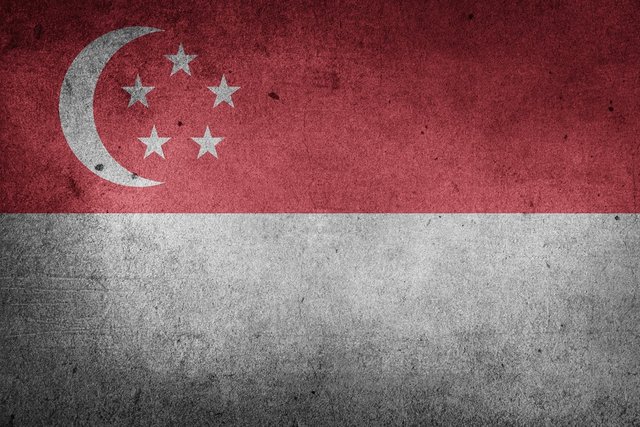
The Republic of Singapore is an amazing soverign city state located in Southeast Asia, sometimes referred to as the Garden City. Just one degree north of the equator, it is hot and humid. While temperatures generally range from 22-35 Celsius, each month is essentially the same, although there are the monsoon seasons. As a relatively new nation, Singapore has a short albeit eventful history.
Beginning as a colonial settlement but going on to become one of the worlds most prosperous nations. Its ports are some of the busiest in the world (by tonnage handled). Just to reiterate, Singapore is crazy successful. In a little over 50 years the economy has grown from $2 billion to $250 billion, overtaking their colonial masters, the British (in GDP per capita). Just look at that skyline <3

Keeping with my previous posts, here are the statistics :)
- Population 5.8 million
- Area (approx) 719km2.
- Primary languages Mandarin, English and Malay = 78%
- Religion Diverse; Buddhist (33.9%), none (16.3%), Muslim (14.3%), Taoist (11.3%), Other Christians (11.0%), Catholic (7.1%), Hindu (5.2%), other (0.7%).
- Life expectancy (m) 82.3
- Life expectancy (f) 87.8
Singapore has the second highest life expectancy in the world and provides a great example of multiculturalism that works. However, looking above at the area and population... it does not take a genius to raise concerns about population density. That leads us into the perils of success, although for for those interested you can reach my other posts by clicking here for Russia and/or here for South Korea.
The Perils of Success
The consistent issue that has always dogged Singapore is the lack of natural resources, including those vital, land and water. Singapore is the third most dense nation in the world (regarding population). Interested to know how many people per km2 each country has? Here are some for reference;
- Monaco 17000
- Singapore 7000
- Republic of China 639
- United Kingdom 255
- France 114
- Russia 8.3
- Canada 3.4
- Greenland 0.026
Regarding land, you may think that short of invading one to get more you're screwed but thanks to modern technology that is not quiet the case. Of course we can build many stories into the sky or underground but we can also reclaim land. Singapore has increased its land from 580 (1960) to 719km2(2015), an increase of approximately 23%. Some of which has been allocated to beaches whereas other land has been used for temple, financial centers just what ever is needed really. Its an engineering marvel. See Sentosa beach, Suntec City and a Buddhist temple below.
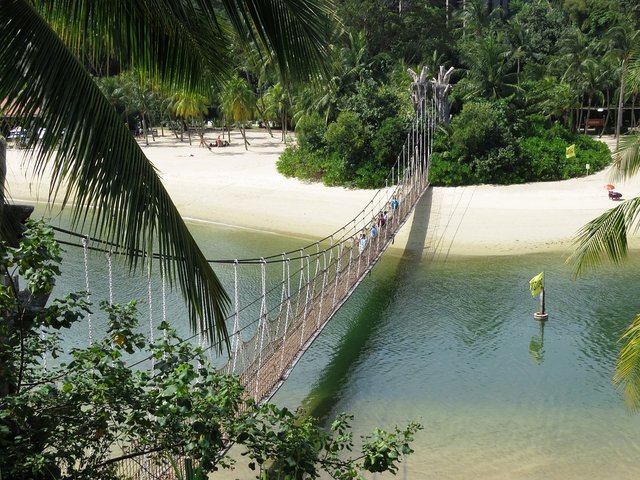
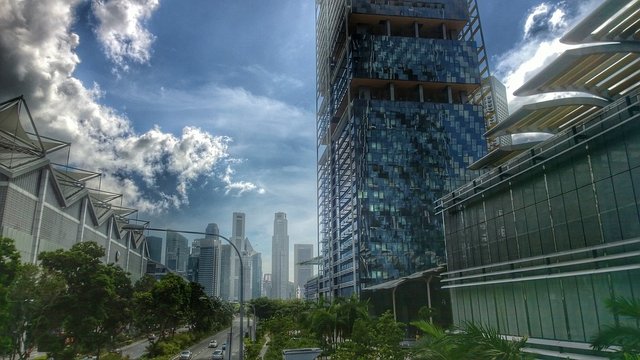
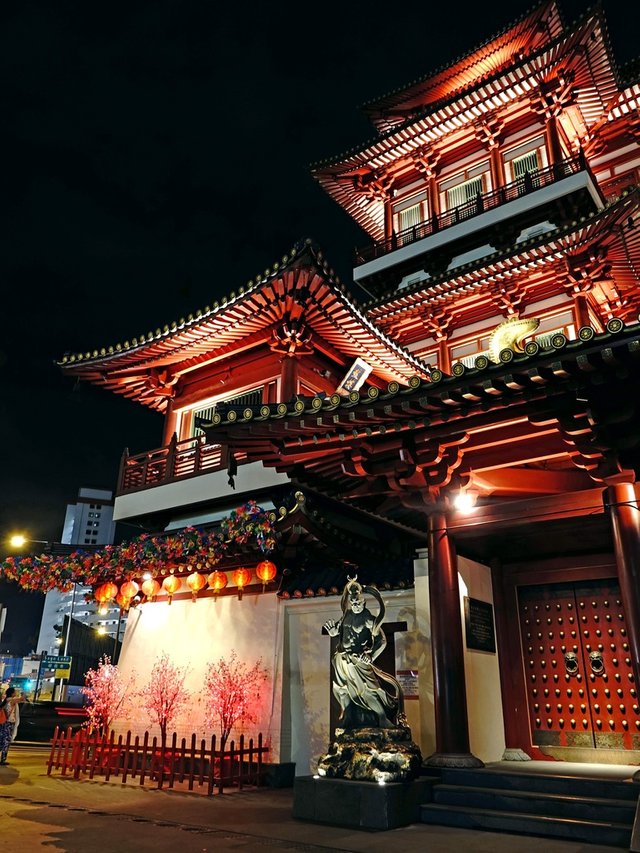
Due to rapid urbanisation Singapore has lost the vast majority of its original forests (approx 95%). In 1967, to mitigate environmental damage the government decided to make Singapore a garden city. Now, almost 10% of Singapore's land is used for nature reserves and parks. This, in combination with an effective sustainability policy resulted in Singapore being ranked 4th in the Environmental Performance Index (EPI, 2014). Just look at the photo below, compare to any other city you've visited and its not difficult to see where then name Garden City comes from :)

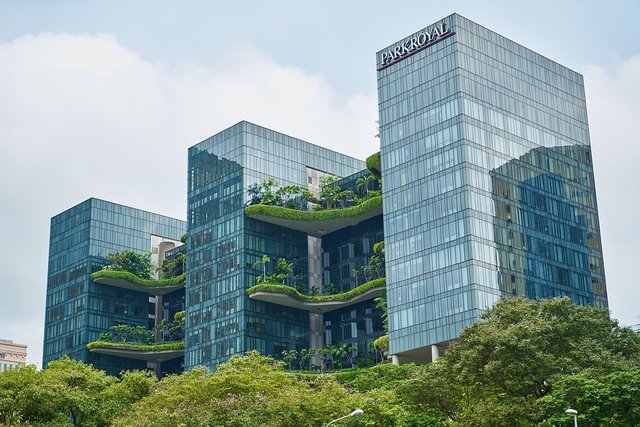
'Vertical forests' like the picture above are quite common in Singapore, as the name suggests this is simply flora on the side of buildings, rising with the glass and steel.
Normally, I would go on to talk about memorable contributions and inventions be the country now (See my previous posts Russia and South Korea). This time, I'd like to focus on why Singapore is named the Garden City and generally its approach to conservation. The why and the how (all while maintaing capitalism). For those of you desperate for an innovation, the first USB drives were from Singapore :P
The garden city with water issues
While we briefly discuss the lack of land, I've mentioned very little about the water situation in Singapore. Its quite interesting (as interesting as water can be :P).
Right, the boring background bit. Singapore imported approximately 40% of its water from Malaysia back in 2003. Malaysia threatens to cut this off to apply political pressure to Singapore, plus the current water agreement (signed in 1961) runs out in 2062. Currently, both parties are not looking to extend this due to disagreements over price. This combined with the previously mentioned political pressure has led Singapore to pursue a water self-sufficiency strategy.
Self-sufficient water supply.
So considering Singapore's water demand is expected to double within the next fifty years, how do you supply water to over 6 million people with such a small amount of land? That's the million dollar question. Currently they have the four tap strategy which aims to reduce the reliance on Malaysia, but this includes the Malaysian water. The four tap strategy comprises of;
- Rainfall, gathered in man made reservoirs. Combined these collect between 200-300 million gallons per day depending on rainfall.
- Desalination plants, these effectively turn seawater (saltwater) into potable water. Modern plants tend to use a process known as reverse osmosis, the primary issue is they are very energy intensive. Currently they provide 'only' 50 million gallons per day. Although, Israel is making great progress in this field.
- NEWater, this is unique to Singapore and the most interesting (in my view). It is essentially a brand of reclaimed water that provides up to 115 million gallons per day. I've heard it referred to as toilet-to-tap wizardry.
- Imported water from Malaysia currently accounts for approximately 250 million gallons per day.
In 2011, Singapore's water demand was reported to be approximately 380 million gallons per day. Suggesting the nation could already go self sufficient, however there is still a stigma attached to NEWater and enough rainfall cannot be guaranteed. An impressive 2/3 of the country's surface is classified as partially protected to ensure rainwater can be collected.
Regarding NEWater, this brand is a form of 'ultra-pure' water created from wastewater. Water reclamation plants discharge some of their effluent to NEWater plants which use microfiltration and reverse osmosis in-conjunction with ultraviolet. Despite the majority of NEWater being used for non-potable purposes due to the social stigma of drinking what was sewage (yummy right?) it far exceeds World Health Organisation (WHO) requirements for drinking water.
What some people may not know is many tech industries require extremely pure water (purer than the water we drink). NEWater is used for this, particularly to wash silicon wafers the high purity of the water saves just one company in Singapore more than $500,000 per year. Amusingly the prime minster also drank a bottle of NEWater to which the crowd responded with cheers.
As public acceptance of recycled water grows and desalination plant costs reduce Singapore should have no issue in being self-sufficient in water by 2061.
My time in Singapore
Unfortunately I was unable to spend as long as I would have liked in Singapore, hopefully I'll get to return. In someways I would like to live and work there... if I could deal with the heat, not sure on that one. My accommodation was located near the waterfront and I had a cozy pod to stay in.
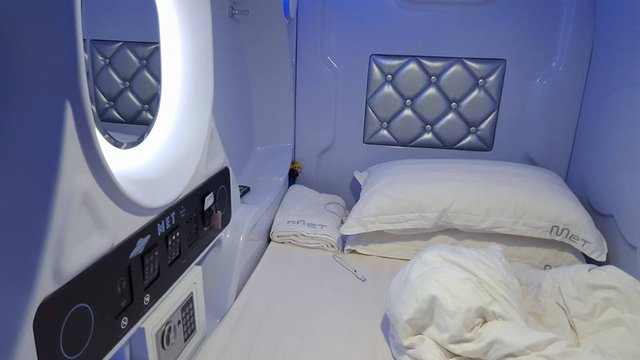
For the first day out and about, I had to visit the main tourist attractions such as the gardens by the bay which I prefer at night (the lights are awesome and its not quite as hot). These impressive features are used in the generation of power from biomass as discussed earlier, an efficient combination of space. Power generation, tourist attraction and flora conservation.
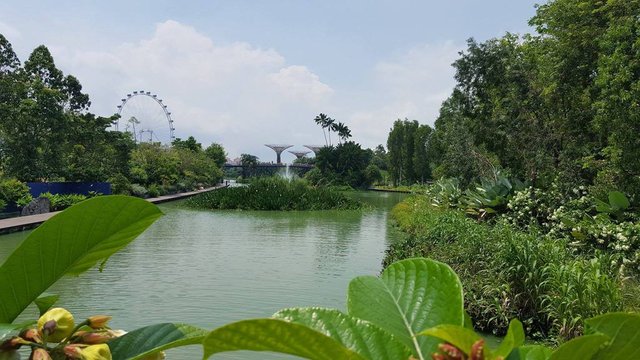
There was also this neat little automated taxi thing with air con (I confess, I used it once).
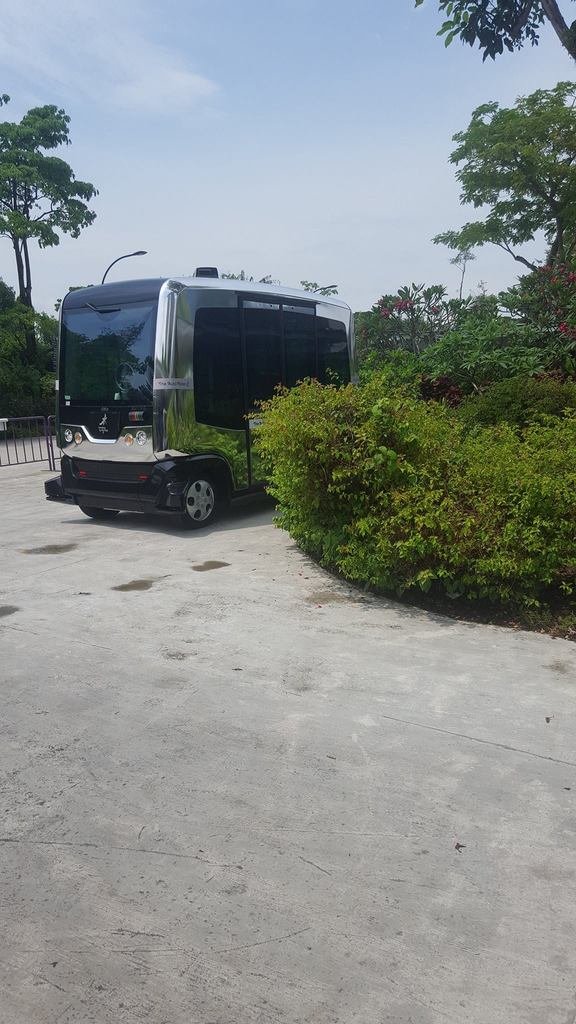
This dropped me off at a enclosure with a controlled environment and a range of flora, I believe its one of the worlds tallest indoor waterfalls?
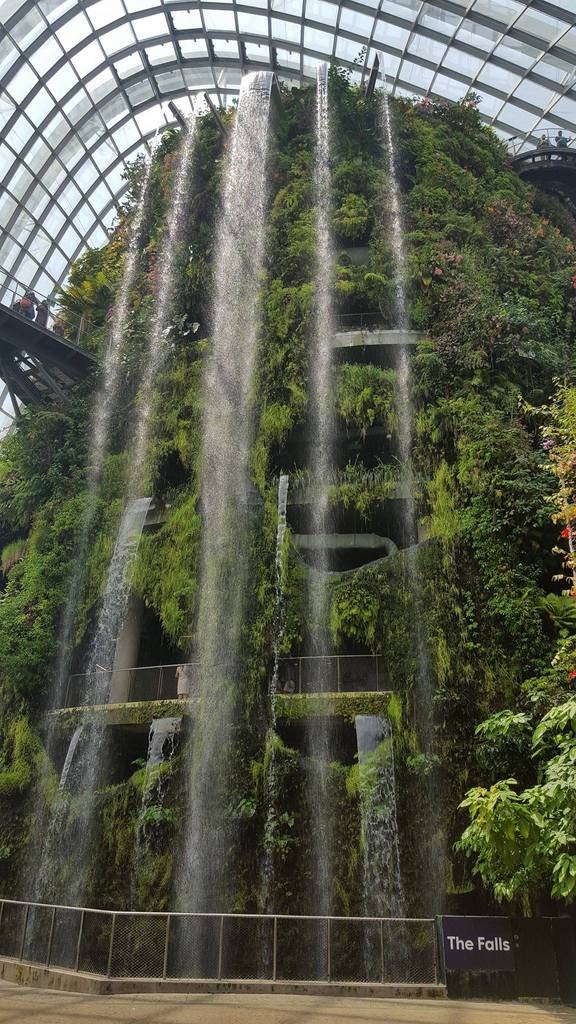
We returned at night to see the light show, grab a drink from the rooftop bar and take in the views. Enjoy the photos;
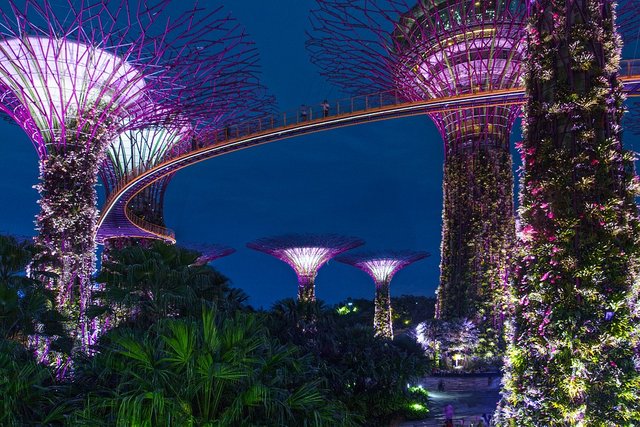
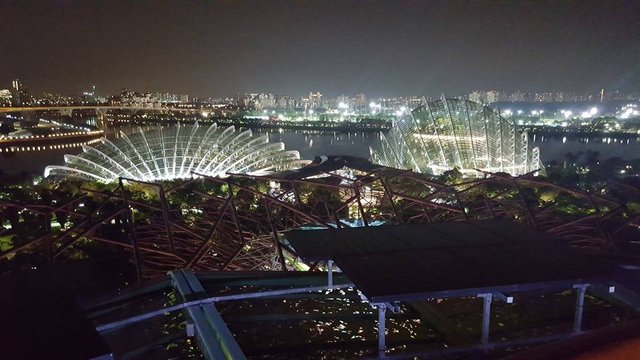
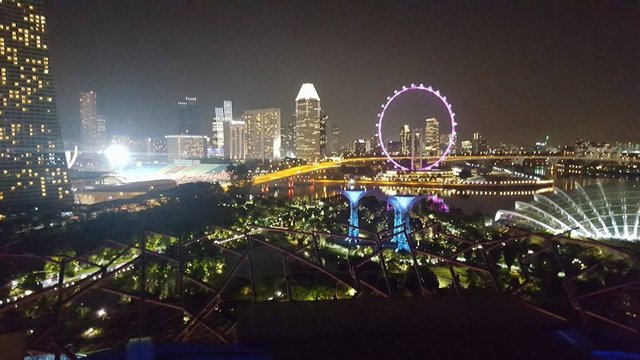
Singapore also has some amazing bars, both independents and the usual chains. One small complaint I have is the age restrictions on some of the clubs. I know, I know its a private premises and they can do as these please but signs saying 28 for men, 25 for women for example seem unfair. Another had 25 for men but 21 women. Bit odd if you ask me but hey bars were not as strict. My favorite has to be 28 Hong Kong Steet. The door looks... uh not like a bar but the inside is nice.
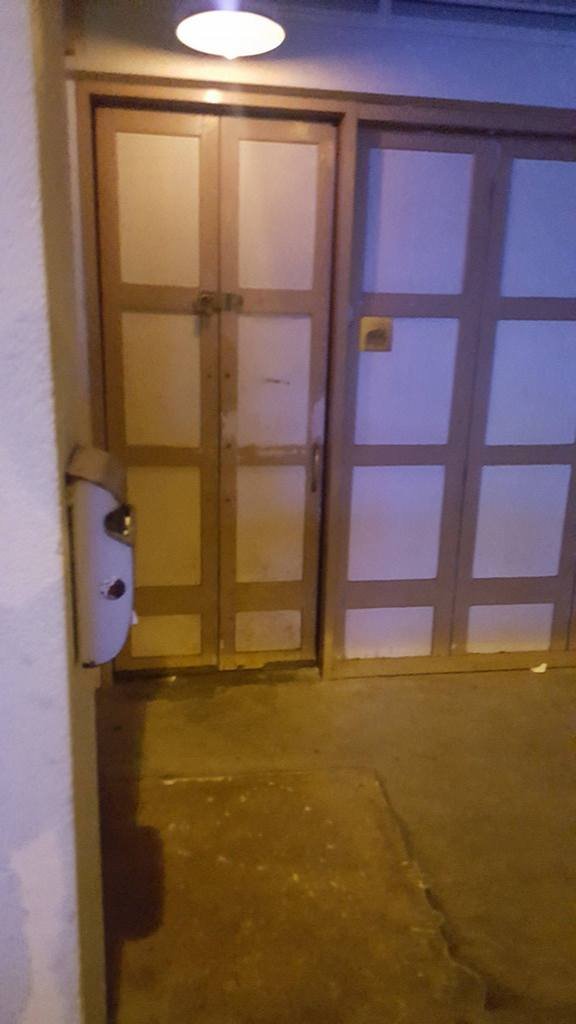
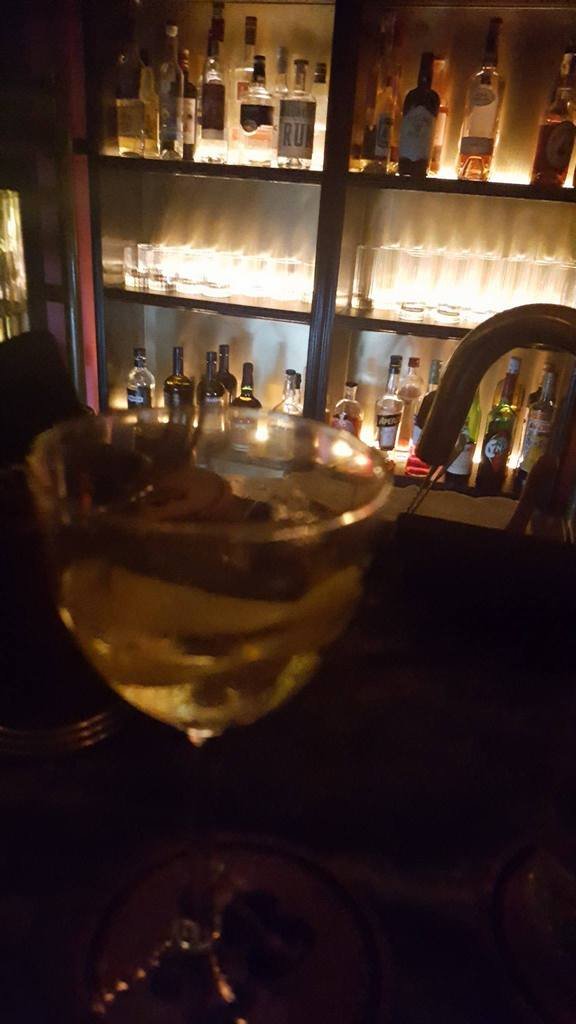
The Singapore zoo is also really quite good, I know zoos can be controversial depending on your views but they do provide some good. In truth, some zoos the animals appear miserable, in this case the only one I felt sympathetic for was the polar bear. On the positive side, two of my favorite animals were there :) The flying fox bat and otters.
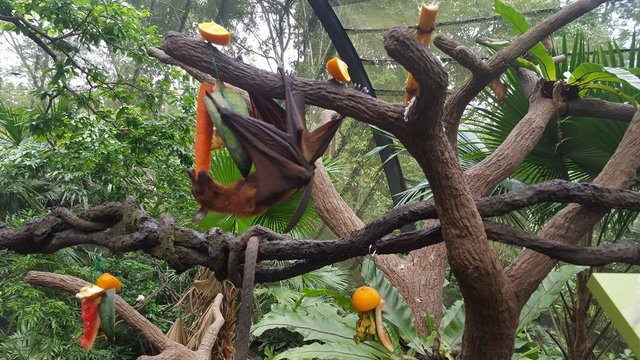
Sadly, flying fox meat is considered a delicacy and the majority of species are threatened with extinction due not only to hunting but also deforestation. The largest flying fox family has a wingspan of approximately 1.5m. Its important to note, bats play an important role in the environment. Some flora depend entirely on bats to pollinate their flowers while other bats act as pest control. Here's an example, **one small brown bat can eat over 1000 mosquitoes in an hour **and this little guy can live for around 40 years. That is a lot of dead mosquitoes, **** mosquitoes, praise bats.
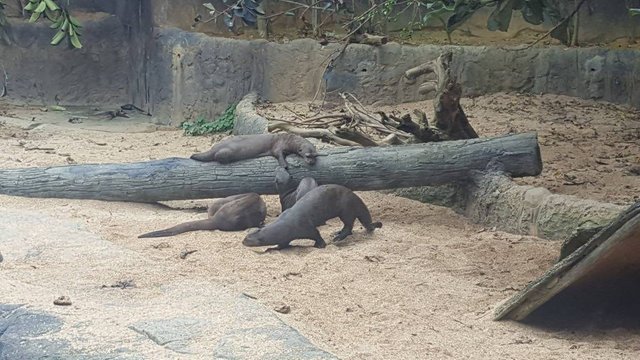
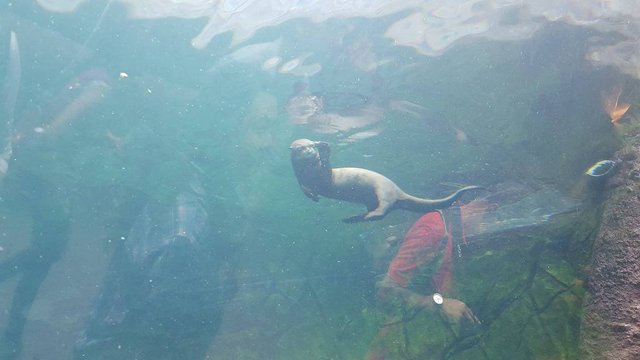
Otters on the other hand are just too cute and playful not to love. Right, for those of you still with me below is a brief but large chunk of text relating to the founding and history of modern day Singapore. If this does not interest you please scroll down to the bottom, comment and criticize and thanks for reading. If you are interested, great keep reading!
History of modern day Singapore
The founding
While he had no idea what Singapore would go on to become, Sir Stamford Raffles is largely responsible for its founding. In short, Raffles believed the British Empire should found a new port in the Malay Archipelago to rival the Dutch and protect opium trade between British India and China.
It is important to note, at this point the island of Singapore was technically under the control of the Sultan of Johor, who was backed by the Dutch. Fortunately for the British,there was political instability and many were loyal to an exiled man named Tengku Long.
Raffles arrived in Singapore in 1819. Due to its geographical location, natural deep water ports and timber available for repairs Raffles quickly founded a small Malay settlement. The settlement housed approximately 1000 people and consisted of Chinese, Orang Laut and Malay. Importantly, around 100 of the Malay were led by Temenggong who had previously settled in 1811. With Temenggong's support, Raffles smuggled Tengku Long to Singapore and supported his claim as Sultan of Johor in return for allowing the British to establish a trading post in Singapore. This treaty was signed in 1819, and modern Singapore was founded.
Early development and law.
Immediately after the treaty signing, Raffles withdrew from Singapore and left Major William Farquhar in command of the settlement. Establishing and developing a thriving trading port from nothing was daunting. Particularly as they were prohibited from charging port duties as Raffles had decided Singapore would be a free port.
As news spread of a free port, masses of migrants journeyed to Singapore to escape Dutch trade restrictions within Archipelago. By 1821, the population had grown to 5000 with a trade volume of $8 million. Despite Farquhar's initial success, Raffles returned in 1822 and was extremely critical. Desperately requiring significant revenue, Farquhar had decided to sell gambling and opium licenses in addition to tolerating slavery. Raffles saw the first as a vice and the latter as an evil. Raffles drafted new policies, discouraging social vices and banning slavery. Farquhar was relieved of his post and lived out the rest of his days in Scotland.
In 1823, a new treaty was signed with Temenggong and the Sultan. This extended British rule to the majority of the island in exchange for life long monthly payments of $800 and $1500 (to Temenggong and the Sultan respectively). While effectively under British Law, the treaty stated Malay traditions, religion and customs must be acknowledged. As before, Raffles left Singapore this time leaving John Crawfurd as Governor. In 1824, the entirety of Singapore was ceded to the British East India Company by the Sultan.
Singapore, as a British colony (1824-1911).
Singapore experienced rapid growth throughout the next several decades due to multiple reasons. Those of significant influence include;
- Free port, many others levied tariffs;
- Opening of the Chinese market;
- The opening of the Suez Canal in 1869 and the advent of steamships resulting in a reduced cost to transport goods from Europe allowed Singapore to prosper.
It is important to note that despite the importance and rapid growth of Singapore, it was poorly managed. The civil service had not grown despite the population increasing enormously.
For example; in 1850 there were only 12 police officers to maintain order in a city of approx 60,000. Opium abuse, prostitution and gambling were rife. Chinese secret societies (basically organised crime) also had a massive presence, disputes led to hundreds of deaths. Additionally, the administration governing appeared to have no desire to improve the welfare of the locals. Furthermore, the staff were usually from India and were unfamiliar with local languages and culture.
The influential merchant community of Singapore became agitated with British rule and lobbied for change. Between 1867-89 the British implemented various changes to placate them. The first notable change occurred in 1867, the Straits Settlements became a separate Crown Colony, this caused various administrative changes. They were now under the supervision of the Colonial Office in London and had executive and legislative councils appointed to assist the governor. In 1877 a Chinese protectorate was created, primarily to protect Chinese women from forced prostitution and secondly to cater to the Chinese community's needs. In 1889 after little success of controlling secret societies, the current governor (Sir Cecil Clementi Smith) banned them, driving them underground.
The next major event was caused by the Tongmenghui who founded their headquarters in Singapore. They were a revolutionary Chinese group seeking to remove the Qing Dynasty from power.Shortly after the Xinhai revolution in 1911, the Republic of China was formed. The history of which would be worthy of an article by itself, it short I'm going to avoid it for today (Sowwi :o).
Singapore WW1 and the run up to WW2 (1914-1939)
Still a British colony, you would expect WWI to have a significant impact on Singapore, surprisingly not. There was only one military incident of note, a mutiny which occurred in 1915. In summary, a rumor circulated that the Indian Sepoy soldiers garrisoned in Singapore were being sent to war (against the Ottoman Empire). The soldiers decided to rebel, murdering their officers and a number of British civilians prior to British troops from Burma and Johor arriving to quell the unrest. After WWI, the British Empire spent a significant amount of resources building an enormous naval base in Singapore to deter the Japanese Empire. This base cost in excess of $500 million but was the largest dry dock in the world with enough fuel to support the entire British naval fleet for 6 months. On top of this, it was defended by RAF squadrons and heavy naval guns (15-inch). Winston Churchill famously called it the "Gibraltar of the East".
Despite the impressive naval base, the British decided to keep the fleet close to home, in Europe. One man of particular note, was Lt Gen Sir William George Shedden Dobbie (appointed governor of Singapore in 1935). This man formed what was later referred to as "Dobbie's Hypothesis". In 1936 Dobbie attempted to determine whether mainland Malaya (to the North of Singapore) required additional troops to prevent a Japanese landing. An attack from the North was seen as the worst scenario, as the Singapore fortifications were very much focused South (towards the sea). The British did not act on his findings.
WW2 The Battle for Singapore
The Japanese attacked Malaya and Pearl Harbor in Dec 1941 simultaneously. Singapore was an obvious target but the British military was confident that they could withstand any invasion by the Japanese. Particularly with the arrival of Force Z, which was a group of warships. Force Z was originally suppose to contain three capital ships.
- HMS Prince of Wales (Battleship class)
- HMS Repulse (Cruiser)
- HMS Indomitable (aircraft carrier)
Unfortunately for the British, the HMS Indomitable ran aground and was unable to accompany the other ships. Without the aircraft carrier as support, the Japanese bombers sunk the remaining capital ships. This is remembered as one of the worst naval defeats for Britain in WW2. Without support, Singapore and Malaya were targeted daily by air raids. Some of which targeted civilians, including hospitals. Malaya's allied forces were decimated, quickly. Allied forces had thought the jungle environment to be unsuitable for tanks (and therefore had none). Japanese light tanks proved otherwise. By the 31st of January (1942), just 55 days after the invasion began, the entire Malay Peninsula had fallen. Leaving Singapore as the sole target.
Allied forces destroyed the causeway linking Malaya and Singapore although this only slowed the Japanese by a few days.Several skirmishes occurred but the allied forces in Singapore were faced with supply exhaustion. The allied general surrendered on the 15th of February, over 100,000 Australian, British and Indian soldiers became prisoners of war. Many of which served as slave labor throughout Burma, Korea, Manchuria or Japan. Japanese atrocities against Prisoners of War (PoWs) and civilians are well documented. Particularly those against the Chinese which were the most brutal. The Japanese military police known as the Kempeitai were ruthless. The number of civilians executed are not known but best estimates are 25,000-50,000 between Malaya and Singapore. Many also died while building a railway line from Thailand and Burma. Singapore suffered three and a half years under Japanese rule until they surrendered on 15th August 1945.
Aftermath
The initial reaction to Japanese surrender was one of mass disorder and violence. Revenge killings were rampant, malnutrition and disease were also prevalent. Britain's inability to defend Singapore in WW2 annihilated its reputation as the infallible ruler. The subsequent years saw an increasing demand for independence. Britain attempted to placate the local populace in 1948 by making some of the seats (6 of 25) on the Legislative council by election. This wasn't entirely democratic as only some people were eligible for election, in short conservatives whom did not seek immediate independence largely won. However, communist groups in Malaya began an armed insurgency which resulted in Britain imposing strict measures against left-wing groups. The Brits used this insurgency as a reason to push through the Internal Security Act, which essentially allowed suspected 'threats to security' to be detained indefinitely.
It wasn't until 1953 Singapore received a limited form of self-government. Where 25/32 seats of the new legislative assembly were elected, although the British retained veto rights and control over foreign affairs. With so many seats up for election, the conservatives lost and a new left wing party known as Labour Front won the most seats. Over the coming years the Brits became less involved in the running of Singapore although one interesting point of note occurred in the early 1960's. When the ruling parties in Singapore considered merging with Malaya permanently to create one nation. Britain was OK with this for the most part as it believed this would prevent Singapore turning to communism.
In 1963 they actually did it; Malaya, Borneo, Sarawak and Singapore merged to form Malaysia. However, this was short lived racial tension was considerable as privileges were granted to the Malays in the constitution of Malaysia. There were also economic issues, the federal government were concerned the economic dominance of Singapore would siphon power away from Kuala Lumpur. Problems escalated to the point of bloodshed and the Malaysian Prim Minster expelled Singapore from the federation after terms had been agreed in secrecy (particularly from the British). Thus, on the 9th of August 1965 Singapore became an independent nation (after being expelled). Resulting in the nations we know of today, Malaysia and Singapore.
Singapore, as a sovereign nation. We're free - now what?
Partially from gaining independence so abruptly, and partially due to the political party differences the only certainty about Singapore's future was uncertainty.
International media was not favorable to Singapore's chance of survival. For the first time Singapore was a wealthy but small nation with effectively zero backing. Multiple outcomes were possible, each a concern.
- Invasion from Indonesian military.
- Invasion from Malaysia and forced reintegration (on worse terms of course).
- High unemployment (approx 12%) growing and leading to civil unrest.
- Severe lack of natural resources, including land.
Fortunately, Singapore gained acceptance into the United Nations on 21st September 1965 and joined the Commonwealth shortly after. Being part of the Commonwealth and UN meant neighboring nations were drastically less likely to invade. British troops had remained in Singapore since gaining independence but announced they would withdraw in 1971. Singapore rapidly established its own armed forces via a national service program (1967) and covert aid of military advisers from Israel. It is now regarded as the one of the most advanced in the region largely due to the training and development provided by Israel.
We know, that today Singapore is a rich flourishing nation regarded as one of the Asian Tigers. One surprisingly point is the very close relationship and history Israel shares with Singapore. I believe this is because Singapore is one of the few non-predominantly Muslim countries in the area. Another interesting point of note is the founding father of Singapore, Lee Kuan Yew (LKY) managed to rule for decades (Prime Minister, 1959-1990).
Lee Kuan Yew (LKY, 1923-2015)
LKY governed for three decades, this is no easy feat. Despite some criticisms of LKY, he effectively transformed Singapore from third world to first world in the space of one generation! Even after stepping down in 1990 he held ministerial positions, adding up to a cumulative 56 years.
LKY forged his own system of meritocracy, where individuals are appointed based almost solely on their ability and talent. He was so successful China attempted to study and replicate his methods, which are taught at the LKY School of Public Policy.
LKY almost completely ignored populist policies, he focused on pragmatic long-term social and economic reforms. These were driven by two ideals, meritocracy and multi-racialism. For example, LKY made English the defacto language for trade allowing the diverse nation to converse and integrate on equal grounds. To protect tradition and culture, ones mother tongue must also be taught at school. Thus guaranteeing bilingualism.
While there were critics of LKY, particularly of his approach to civil liberties (including protests and political opponents). He maintained disciplinary measures are required for stability and economic progress. Whether the critics were right or wrong its difficult to look at the Singapore of today and not admire his vision. LKY died 23rd March 2015 (age 91) of pneumonia, a week of national mourning was held throughout which over a million residents and guests paid tribute to him.
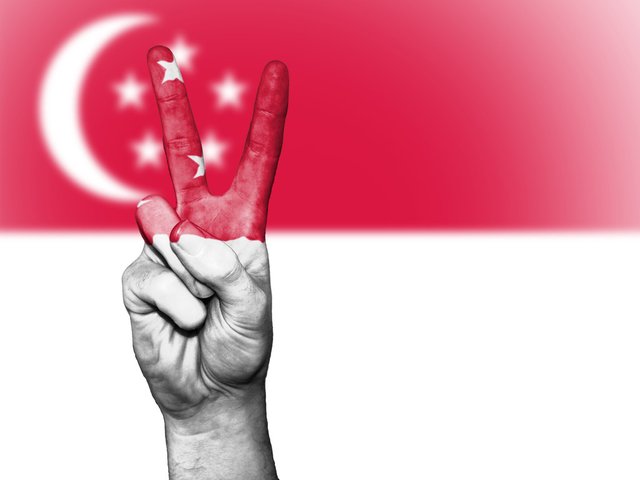
Thank you so much <3 Please leave a comment.
hi @Wanderingone I hope you enjoy your time here, its a great community ! Nice post, Wish you much luck! Cheers! i will follow your account, please follow me .
You really described Singapore very well. Glad you didn't miss the Tree Garden (photograph just after the indoor waterfall).
I've got some water for them :)
Nice detailed post. Thanks for sharing.
World has much to learn from commitment, dedication and most of all civic sense of Singapore citizens and its leaders. I read somewhere that chewing gum is banned in Singapore which was causing maintenance problems. Such decisions are difficult to take and implement in today's world.... Good one.. following for more such posts... Good Luck :)
Thanks for commenting, yeah chewing gum is banned they are quiet strict but it seems to work for them. There is also no food and drink allowed on the subway plus a large fine for not flushing public toilets etc.
Congratulations @wanderingone! You have completed some achievement on Steemit and have been rewarded with new badge(s) :
Click on any badge to view your own Board of Honor on SteemitBoard.
For more information about SteemitBoard, click here
If you no longer want to receive notifications, reply to this comment with the word
STOPHi @wonderingone welcome to Steemit. I do hope that you have a wonderful time on this platform, if you have any questions or if there is anything I can help you with do not hesitate to ask, I will be more than happy to help.
If you would like to stay in touch please Follow me @Fshllc
wow, had no idea it was this beautiful. Thanks for the history as well awesome post.
Hey brother glad to connect. Im based in Singapore btw . Yes its amaizng !
nice introuction. Followed. Follow me back 😘
Congratulations @wanderingone! You have completed some achievement on Steemit and have been rewarded with new badge(s) :
Click on any badge to view your own Board of Honor on SteemitBoard.
For more information about SteemitBoard, click here
If you no longer want to receive notifications, reply to this comment with the word
STOPCongratulations @wanderingone! You received a personal award!
You can view your badges on your Steem Board and compare to others on the Steem Ranking
Do not miss the last post from @steemitboard:
Vote for @Steemitboard as a witness to get one more award and increased upvotes!